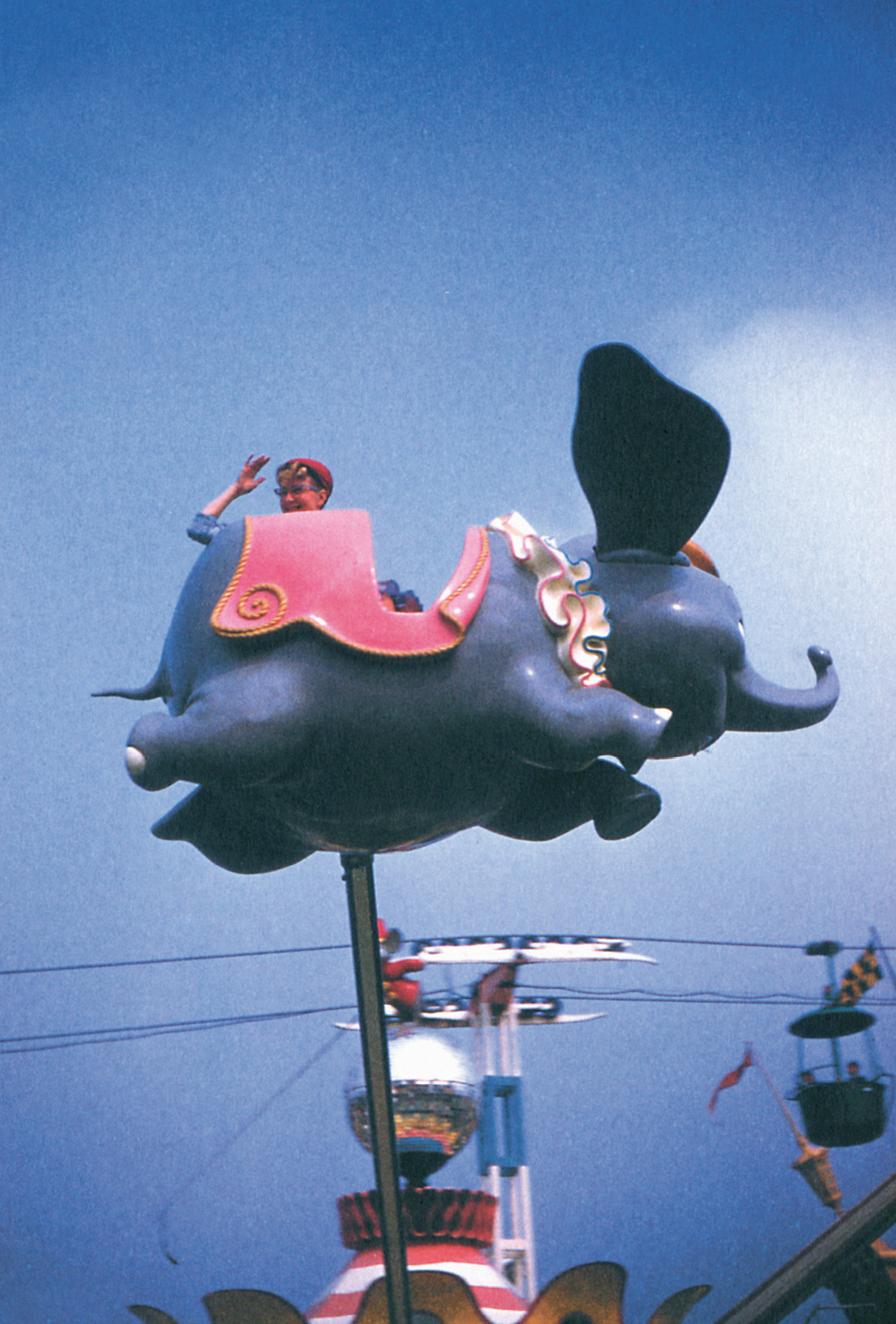Legend / Jug Jug to Dirty Ears
On the pleasure principle’s treadmill
Wayne Koestenbaum
“Legend” is a column by Wayne Koestenbaum in which he suggests one or more possible captions for an image provided by the editors of Cabinet.
Chez Henry James, everyone wants to watch. In The Aspern Papers, Miss Bordereau expostulates: “I want to watch you—I want to watch you!” Is Miss Bordereau horny? Nosy? Does the watery border implied by her name—border eau—give us license to picture her reclining, like the nude odalisque in Déjeuner sur l’herbe, on the banks of a stream that might not exist?
Look at this photograph. Some groundling wanted to watch a woman high up in her amusement-park contraption, Dumbo afloat on a pole that plunges the passenger up and down in a remorseless demonstration of fort-da doldrums. We start out believing that throwing and retrieving are separate activities; we end up, in middle age, understanding that the pleasure principle’s treadmill kills desire. Or do I mean the death drive? I can’t tell the twins apart. Which is the pleasure principle? The lady in the pink hat? What does the death drive wear when it goes for a carnival ride?

Maybe no one owns the pleasure principle. J. Laplanche and J.-B. Pontalis firmly note, in The Language of Psycho-Analysis, that the “idea of grounding a regulatory principle of mental functioning on pleasure is by no means Freud’s own. Fechner, whose ideas, as is well known, left a profound mark on Freud, had himself put forward a ‘principle of the pleasure of action.’” Maybe Fechner is wearing a pink hat and riding Dumbo at originality’s carnival; maybe Fechner is waving a dismissive, gloating hand at Freud, who stands below, on the pavement, looking up at his hoary precursor.
“‘Jug Jug’ to dirty ears” is how T. S. Eliot, in The Waste Land, described rape. (“So rudely forced.”) As anyone who has pretended to feel pleasure while actually feeling pain can attest, the art of disguising agony isn’t hard to master. I pretend to enjoy the amusement-park ride, though it fills me with terror. And now it’s time to tell you the truth. At a friend’s birthday party, I rode a Ferris wheel and pretended to love it. I was five or six years old. After the ride ended, my friend’s mother asked me, “Did you have a good time?” I said yes. She said, “You didn’t look like you were having a good time.” And then I felt shame for having lied, for having pretended to enjoy the ridiculous ride: to comply with normality’s codes, I’d professed to relish an experience that felt like death. I don’t remember the kid whose party it was. His name might have been Randy, but it might have been not-Randy. Randy or not-Randy had no face, no identity. The only Being in that amusement park was the birthday boy’s mother, the smiling inquisitor who came forth to ask the one question I couldn’t answer truthfully: did you panic? What do you say about a structure—a ride—that produces pleasure through unease? I didn’t know the word vertigo. I couldn’t say to not-Randy’s mother, the judge around whose body the amusement park formed concentric circles, “I experienced vertigo.”